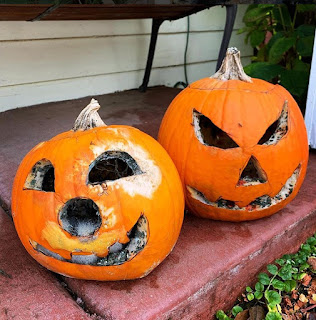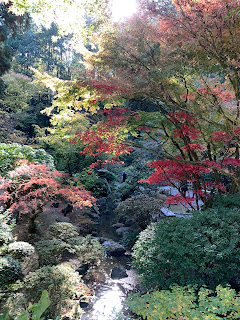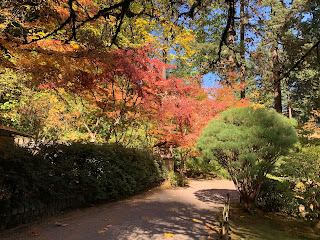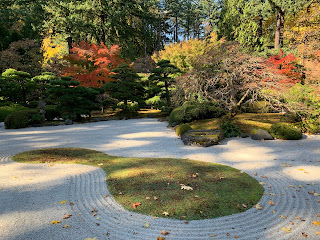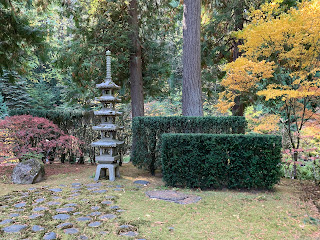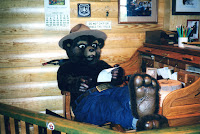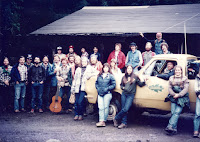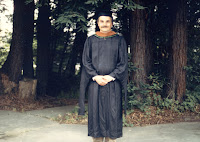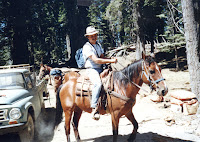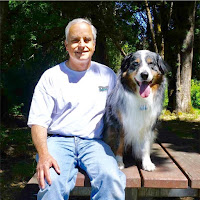- The National Parks: America's Best Idea - Author: Dayton Duncan, Ken Burns
- National Geographic Guide to National Parks of the United States
- Kiss the Ground: How the Food You Eat Can Reverse Climate Change, Heal Your Body & Ultimately Save Our World - Author: Josh Tickell
- A Short History of Nearly Everything - Author: Bill Bryson
- The Mosquito: A Human History of Our Deadliest Predator - Author: Timothy C. Winegard
- Desert Solitaire: A Season in the Wilderness - Author: Edward Abbey
- Cadillac Desert, Revised and Updated Edition:The American West and Its Disappearing Water - Author: Marc Reisner
- All the Wild That Remains: Edward Abbey, Wallace Stegner, and the American West - Author: David Gessner
- American Nations: A History of the Eleven Rival Regional Cultures of North America - Author: Colin Woodard
- A World Undone: The Story of the Great War, 1914 to 1918 - Author: G.J Meyer
- Wild Ones: A Sometimes Dismaying, Weirdly Reassuring Story About Looking at People Looking at Animals in America - Author: Jon Mooallem
- The Earth Is Weeping: The Epic Story of the Indian Wars for the American West - Author: Peter Cozzens
- Islam and the Future of Tolerance: A Dialogue - Author: Sam Harris, Maajid Nawaz
- The Naturalist: Theodore Roosevelt, A Lifetime of Exploration, and the Triumph of American Natural History - Author: Darrin Lunde
- God: A Human History - Author: Reza Aslan
- The Plot to Destroy Democracy: How Putin and His Spies Are Undermining America and Dismantling the West - Author: Malcolm Nance, Rob Reiner
Tuesday, December 31, 2019
Book Reading List - 2019
Friday, December 27, 2019
Ode To My Hoomans - Poem
Ode To My Hoomans is a poem by my dog, Hobie Dawg in celebration of his
relationship with his hoomans (humans) who have loved and cared for him for
his entire life. According to Hobie, the poem was inspired by another poem
titled "Bum" by W. Dayton
Wedgefarth
Ode To My Hoomans
They're pudgy folks, not too quick
as far as hoomans go.
Their legs are weak and wobbly,
I doubt they'd win best in show.
They snore at night and fart a lot
and blame it all on me.
But then I lick my private parts
and kiss their faces with glee.
I talk to them like they're a dog,
They try to understand.
They look at me quizzically,
but I know they're only hooman.
They take me on walks daily
through rain and sleet and snow.
They feed me like a king,
but why, I do not know.
They pick up my poop with nonchalance.
WHAT IS UP WITH THAT?
They stick with me through thick and thin
and always have my back.
So, if you’re wondering how I feel,
About my hooman pack.
I think I've trained them very well
and THANK GOD I'M NOT A CAT!
Saturday, December 21, 2019
Winter Solstice - Haiku
In the Northern Hemisphere, Winter solstice 2019 was at 8:19 PM on Saturday, December 21. I love Winter Solstice because it means days are getting longer and hopefully sunny weather is only a few months away. One of my favorite birds is the American Robin because they stay here in the PNW throughout the winter and don’t seem to be affected by the long, dark winter days. Following is a haiku to celebrate Winter Solstice and the American Robin
Labels:
Birding,
CouveCritters,
Haiku,
Poem,
Solstice,
Winter Solstice
Location:
Vancouver, WA, USA
Wednesday, December 18, 2019
Mammals - Columbian Black Tailed Deer
Found these two Columbian black-tailed deer (Odocoileus hemionus columbianus) grazing in a slough at Vancouver Lake Regional Park, Washington. It was late on a cloudy day but a break in the clouds gave an almost surreal lighting that made them look like they were in a museum diorama.
According to Wikipedia, there are two forms of black-tailed deer that occupy coastal woodlands in the Pacific Northwest of North America. Columbian black-tailed deer are found in western North America, from Northern California into the Pacific Northwest of the United States and coastal British Columbia in Canada. The other, Sitka deer (O. h. sitkensis) is found coastally in British Columbia, southeast Alaska, and southcentral Alaska. Photographed with a Sony RX10IV on December 12, 2019
According to Wikipedia, there are two forms of black-tailed deer that occupy coastal woodlands in the Pacific Northwest of North America. Columbian black-tailed deer are found in western North America, from Northern California into the Pacific Northwest of the United States and coastal British Columbia in Canada. The other, Sitka deer (O. h. sitkensis) is found coastally in British Columbia, southeast Alaska, and southcentral Alaska. Photographed with a Sony RX10IV on December 12, 2019
Thursday, December 5, 2019
Frenchman's Bar - Bicycle Ride
 |
| Frenchman's Bar Regional Park |
Saturday, November 16, 2019
Post Mortem Pumpkins - Haiku
Halloween is done •
Pumpkins need a body bag •
May they Rest In Peace
My pumpkin carving skills haven’t improved much but I’d say I at least got my money’s worth out of these two 🎃🎃😂
Location:
Vancouver, WA, USA
Tuesday, October 29, 2019
Portland Japanese Garden - Fall Colors
The Portland Japanese Garden is a favorite of mine, especially in the Fall when the colors are spectacular. According to Wikipedia, The Portland Japanese Garden is a traditional Japanese garden occupying 12 acres, located within Washington Park in the West Hills of Portland, Oregon. In 1958, Portland became a sister city of Sapporo, Japan.
This inspired Portland business leaders and public officials to create a Japanese garden in Portland. The Japanese Garden is built into a forested hillside in Washington Park on land that was previously the site of Portland's zoo until 1959. The garden was opened to the public in 1967.
In a study conducted in 2013 by the Journal of Japanese Gardening, it was deemed the finest public Japanese garden in North America out of more than 300 such gardens surveyed by Japanese garden experts.
The former Japanese ambassador to the U.S., Nobuo Matsunaga, said in 1988 that the garden was “the most beautiful and authentic Japanese garden in the world outside Japan. The 12-acre (4.9 ha) Portland Japanese Garden is composed of the following eight garden spaces plus a Cultural Village -
• The Strolling Pond Garden.
The former Japanese ambassador to the U.S., Nobuo Matsunaga, said in 1988 that the garden was “the most beautiful and authentic Japanese garden in the world outside Japan. The 12-acre (4.9 ha) Portland Japanese Garden is composed of the following eight garden spaces plus a Cultural Village -
• The Strolling Pond Garden.
• The Natural Garden.
• The Sand and Stone Garden.
• The Flat Garden.
• The Tea Garden.
• The Entry Garden.
• The Ellie M. Hill Bonsai Terrace.
• The Tsubo-Niwa.
Monday, October 28, 2019
Birds - Golden Crown Kinglets
Spotted these Golden-Crowned Kinglets (Regulus satrapa) at my favorite birding place, Vancouver Lake Regional Park, Washington. According to Wikipedia, they are one of the smallest passerines found throughout much of North America. Photographed with a Sony RX10IV on October 28, 2019.
Labels:
Backyard Birds,
Birding,
Nature
Location:
Vancouver, WA, USA
Sunday, September 15, 2019
Birds - American White Pelicans
Had a surprise encounter on the road to Vancouver Lake Regional Park with a large flotilla of American white pelican (Pelecanus erythrorhynchos) . White Pelican are seasonal visitors in SW Washington. According to Wikipedia, White pelicans are a large aquatic soaring bird that breeds in interior North America, moving south and to the coasts, as far as Central America and South America, in winter. Preferred habitats include shallow lakes and coastal lagoons.
Note: The Trump administration recently finalized its deconstruction of clean water rules that protect wetlands such as this. The new rules would limit or remove protections for vernal pools or ephemeral bodies of water that appear during the rainy season.
As a result, polluters will no longer need a permit to discharge harmful substances into these bodies of water. Developing or polluting these areas could destroy critical habitat for species that depend on vernal pools for water and food. According to The Center for Biological Diversity, the new rules could accelerate the extinction of more than 75 species. Polluting these ephemeral bodies of water and wetlands could also have impacts on drinking water. An EPA study found that 1 in 3 Americans get some of their drinking water from ephemeral bodies of water.
As a result, polluters will no longer need a permit to discharge harmful substances into these bodies of water. Developing or polluting these areas could destroy critical habitat for species that depend on vernal pools for water and food. According to The Center for Biological Diversity, the new rules could accelerate the extinction of more than 75 species. Polluting these ephemeral bodies of water and wetlands could also have impacts on drinking water. An EPA study found that 1 in 3 Americans get some of their drinking water from ephemeral bodies of water.
Saturday, August 10, 2019
Haste Ye Back to Scotland - Family Photo Fun Fact
The following family photo fun fact is in memory of my grandfather, Charles Manclark who would have been 116 years old today (August 10, 2019). Between June 9 to November 11, 1961, my grandparents, Charles and Mary Manclark took a European vacation. On this trip they visited 10 countries including Canada, France, Spain, Austria, Germany, Belgium, Switzerland, Italy, England and Scotland. While driving north on Britain’s A1 road, they stopped to take a couple photos at the border of Scotland and England. As was usual, Charles posed while Mary took a photo of him standing in front of both sides of the "Welcome to Scotland" sign. Fun fact: If you Google for images of the sign "Haste Ye Back to Scotland", you'll get a number of photos that include the photo that Mary took of Charles. In my opinion, this photo is by far the best of the lot including one of the early Beatles who also posed in front of the sign.
If you look closely at the "Haste Ye Back" photo of Charles, you’ll notice him demonstrating one of his very unique skills of being able to touch his nose with his tongue. I’ve always admired this skill but no matter how hard I try, I’ve never been able to master it. I had hoped to take a photo of Carol and myself posing in front of the sign when we visited Scotland in 2012 but, unfortunately, the "Haste Ye Back" sign no longer exists and has been replaced by a more modern "Welcome to Scotland" sign.
Wednesday, July 31, 2019
Retirement - July 31, 2019
July 31, 2019 was my last day working for the U.S.Forest Service after 33 years. I began my career with the Forest Service as an Ecologist on the Six
Rivers National Forest on June 1986 right after graduating from Humboldt State University with a Master of Science degree in Natural Resources.
My dream job was to work as a field Ecologist,
riding horses in pristine wilderness areas, gathering data and, of course, saving the planet. As a Forest Service Ecologist, I was occasionally able to ride horses in pristine wilderness areas but in reality, my job primarily required
a more conventional method of getting around in the field, i.e. hiking. After working as an Ecologist for about six years, I discovered there was a real need for people to develop databases that could be
Rivers National Forest on June 1986 right after graduating from Humboldt State University with a Master of Science degree in Natural Resources.
riding horses in pristine wilderness areas, gathering data and, of course, saving the planet. As a Forest Service Ecologist, I was occasionally able to ride horses in pristine wilderness areas but in reality, my job primarily required
a more conventional method of getting around in the field, i.e. hiking. After working as an Ecologist for about six years, I discovered there was a real need for people to develop databases that could be
used to compile and analyze the data that was being collected. At that time, the Forest Service was just getting started with computers and needed people with database skills. So, seeing an opportunity, I switched gears and became an Information Technology Specialist. My job
as an IT Specialist included developing Forest and Region wide databases that were used to better manage Forest Service resources. In some ways, this time was probably the most satisfying period of my Forest Service career. Eventually, after 13 years on the Six Rivers National Forest I changed positions and moved to Vancouver, Washington where I worked as a System
Administrator and provided user computer support on the Gifford Pinchot National Forest. After about three years on the Gifford Pinchot NF, I moved to the Portland Forestry Sciences Lab in Portland, Oregon where I worked as a the System Administrator and provided user computer support. After three years at the Portland Forestry Science Lab, I moved to the Region 6 Regional Office in Portland, Oregon where I again worked as the System Administrator and provided user computer support until I retired on July 31, 2019.
as an IT Specialist included developing Forest and Region wide databases that were used to better manage Forest Service resources. In some ways, this time was probably the most satisfying period of my Forest Service career. Eventually, after 13 years on the Six Rivers National Forest I changed positions and moved to Vancouver, Washington where I worked as a System
Administrator and provided user computer support on the Gifford Pinchot National Forest. After about three years on the Gifford Pinchot NF, I moved to the Portland Forestry Sciences Lab in Portland, Oregon where I worked as a the System Administrator and provided user computer support. After three years at the Portland Forestry Science Lab, I moved to the Region 6 Regional Office in Portland, Oregon where I again worked as the System Administrator and provided user computer support until I retired on July 31, 2019.
Retirement is still a little surreal and hasn’t quite set in. The left side of my brain enjoyed the challenge of working as a computer System Administrator but I am now looking forward to challenging my right-brain. I’m also looking forward to lots of
travel adventures, rediscovering old hobbies, bicycling and spending more time with family and friends (including the furry four legged kind).
travel adventures, rediscovering old hobbies, bicycling and spending more time with family and friends (including the furry four legged kind).
Labels:
Forest Service,
Retirement
Location:
Portland, OR, USA
Monday, June 10, 2019
Mary Manclark - Family Photo Fun Fact
The following family photo fun fact is in memory of my grandmother, Mary Manclark who would have been 114 years old today (June 10, 2019). This is one of my favorite photos of my grandmother. The photo was taken on the SS Laurentia on September 14, 1961 during Mary's and Charles' (my grandfather) return trip from their 1961 European vacation. They boarded the SS Laurentia in Glasgow, Scotland on September 12, 1961 and arrived in Montreal, Canada on September 21, 1961. Since Mary was the main photographer on their vacation, this is one of maybe three photos taken of her during their trip. In the photo, Mary is looking out from the port window of the cabin where they stayed on the ship. Mary complained of rough seas during the trip which is not surprising since they were sailing close to the edge of Hurricane Carla, which according to Wikipedia, was “the first Category 5 hurricane of the 1961 Atlantic hurricane season”.
Saturday, May 18, 2019
A Human's Litany for a Dog - Poem
A "Human's Litany for a Dog" is a poem by me that was inspired by my dog, Hobie Dawg and the poem "A Dog's Litany for a Human". Both poems were inspired by the poem Litany by former US Poet Laureate, Billy Collins that was inspired by a poem by Jacques Crickillon. (Click here to listen to Litany read by a 3 year old boy).
You are my copilot through thick and thin,
my muse on our morning walks.
You are an agility genius,
and a frisbee fetching fanatic.
You are my soulmate
and the #WorldsBestDog.
However, you are not a fussy feline,
or an attention seeking sycophant.
And you are certainly not an umbrageous oaf.
There's just no way you are an umbrageous oaf.
It is possible you are an Instagram star,
or even a meaningful meme.
But you are not even close to being a Grumpy Cat.
And a quick look in the mirror will show
that you are neither an Internet Bot
nor a Twitter troll.
It might interest you to know,
speaking of the plentiful imagery of the world,
that I am a bag of biscuits.
I also happen to be your Uber chauffeur,
your photo paparazzi,
and your primary pooper scooper.
I am also an ardent admirer
and fanatic fan.
But don't worry, I'm not an agility genius.
You are an agility genius.
You will always be an agility genius.
Not to mention a frisbee fetching fanatic,
and somehow, my soulmate and #WorldsBestDog.
You are my copilot through thick and thin,
my muse on our morning walks.
You are an agility genius,
and a frisbee fetching fanatic.
You are my soulmate
and the #WorldsBestDog.
However, you are not a fussy feline,
or an attention seeking sycophant.
And you are certainly not an umbrageous oaf.
There's just no way you are an umbrageous oaf.
It is possible you are an Instagram star,
or even a meaningful meme.
But you are not even close to being a Grumpy Cat.
And a quick look in the mirror will show
that you are neither an Internet Bot
nor a Twitter troll.
It might interest you to know,
speaking of the plentiful imagery of the world,
that I am a bag of biscuits.
I also happen to be your Uber chauffeur,
your photo paparazzi,
and your primary pooper scooper.
I am also an ardent admirer
and fanatic fan.
But don't worry, I'm not an agility genius.
You are an agility genius.
You will always be an agility genius.
Not to mention a frisbee fetching fanatic,
and somehow, my soulmate and #WorldsBestDog.
A Dog's Litany for a Human - Poem
A "Dog's Litany for a Human" is a poem written by my dog, Hobie Dawg that was inspired by the poem Litany by former US Poet Laureate and New York State Poet, Billy Collins that was inspired by a poem by Jacques Crickillon. (Click here to listen to Litany read by a 3 year old boy).
You are the biscuits in the jar,
the water in my bowl.
You are my mentor on our morning walks
and the Frisbee that flies through the air.
You are my superhero
and awesome provider of food and fun
However, you are not the squirrel in the tree,
the cat that I chase
or the tree that I mark.
And you are certainly not the scent that I roll in.
There's just no way that you are the scent that I roll in.
It is possible you are my dog park buddy
or even a psycho paparazzi
But you are not even close to the smell of a dog butt.
And a quick look in the mirror will show
that you are neither my bed in the corner
nor my basket of toys.
It might interest you to know,
speaking of the plentiful imagery of the world,
that I am the sound of sirens that howl.
I also happen to be the guarder of mail,
the fetcher of newspapers
and the hair in your sandwich.
I am also the snorer at night
and the anonymous fart.
But don't worry, I'm not the biscuits in the jar.
You are still the biscuits in the jar.
You will always be the biscuits in the jar.
Not to mention the water in my bowl
and somehow, my mentor on our morning walks
Hobie Dawg
You are the biscuits in the jar,
the water in my bowl.
You are my mentor on our morning walks
and the Frisbee that flies through the air.
You are my superhero
and awesome provider of food and fun
However, you are not the squirrel in the tree,
the cat that I chase
or the tree that I mark.
And you are certainly not the scent that I roll in.
There's just no way that you are the scent that I roll in.
It is possible you are my dog park buddy
or even a psycho paparazzi
But you are not even close to the smell of a dog butt.
And a quick look in the mirror will show
that you are neither my bed in the corner
nor my basket of toys.
It might interest you to know,
speaking of the plentiful imagery of the world,
that I am the sound of sirens that howl.
I also happen to be the guarder of mail,
the fetcher of newspapers
and the hair in your sandwich.
I am also the snorer at night
and the anonymous fart.
But don't worry, I'm not the biscuits in the jar.
You are still the biscuits in the jar.
You will always be the biscuits in the jar.
Not to mention the water in my bowl
and somehow, my mentor on our morning walks
Hobie Dawg
Monday, April 22, 2019
Earth Day - Limerick
Wednesday, March 20, 2019
Cherry Blossoms - Haiku
 |
| Cherry trees along Tom McCall Waterfront, Portland, OR |
Portland, Oregon comes alive around mid-April to May when the cherry trees bloom. The most famous group of cherry trees are located on the northern end of the Tom McCall Waterfront Park in the Japanese American Historical Plaza. These 100 Akebono cherry trees were donated in 1990 by the Japanese Grain Importers Association and were planted as a memorial to the 120,000 men, women and children who were held in internment against their will during World War II.
 |
| Cherry blossoms along Tom McCall Waterfront, Portland, OR |
Following are a couple haiku to celebrate spring and flowering of the cherry trees.
Location:
Portland, OR, USA
Tuesday, January 1, 2019
New Years Toast - Poem
The holidays are over
2018 is done.
Calamity is looming
unless we vote as one.
But let us take a moment
and try to be of cheer.
Let's give a toast of thanks
Subscribe to:
Comments (Atom)





